
The Computer History Museum (CHM) has a unique opportunity when it comes to teaching students about computers and the technology-driven world in which we live. As a history museum, we look at the stories and people behind the technology, contextualizing and enlivening it to make it relatable for visitors. And through our education programs, we aim not only to help students make personal connections to the history of computing, but also to understand the role technology plays in all aspects of our lives and to feel confident exploring and engaging with technology in and outside of the Museum.
As part of our efforts to connect with as many students as possible and to help those students see a place for themselves in science, technology, engineering, and mathematics (STEM) fields, we are always looking to partner with organizations that are using technology education to effect positive change in the lives of young people. So we were excited for the opportunity to work with education nonprofit Iridescent and students from their Technovation Challenge at CHM this summer.
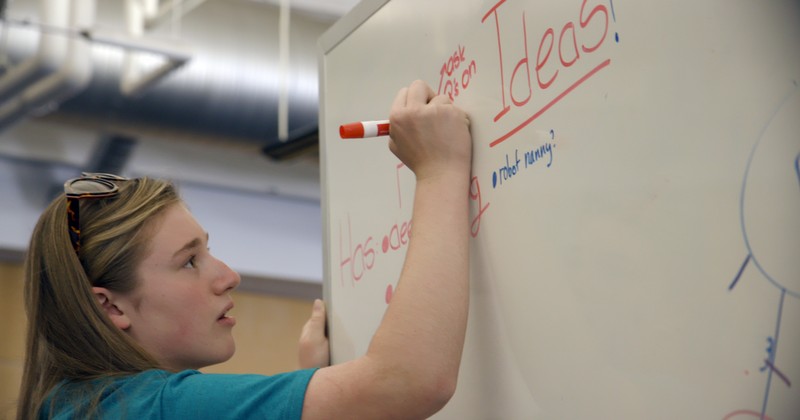
A Technovation Challenge finalist begins the brainstorming process, listing ideas, and features for her group’s robot during CHM’s Design the Future workshop.
The Technovation Challenge has been engaging “girls for a change” since 2010. Each year, Technovation, a global technology entrepreneurship program for girls, invites participants from all over the world to learn how to use technology to solve real-world problems. Participant teams develop mobile apps that target a specific issue or problem. This year’s finalists included an app to help pregnant women in India access care and information, two apps were designed to help communities reduce waste, and another aimed to assist refugees in the United States, just to name a few. Since the program began, over 15,000 girls in more than 100 countries have participated in Technovation, using their apps to address a wide range of issues.
Technovation does more than just challenge girls to create a mobile app. It also provides a curriculum that guides them through the development process and teaches them the skills they need to build and market their app. There are lessons in programming as well as on branding, pitching ideas, and developing business plans. Technovation also has volunteer mentors working around the world to help teams navigate the planning, development, and submission processes. The whole curriculum works together in support of the program’s larger goal to help girls become tech entrepreneurs and leaders.
In the final stage of the annual competition, 12 finalist teams are selected: six from the junior division (ages 10–14) and six from the senior (ages 15–18). The 12 finalist teams are invited to the World Pitch Summit in Silicon Valley for a week in August for the chance to meet other teams, explore the Bay Area, and share their project with others. Each team pitches their app and business plan to a panel of judges that selects one grand prize winner from each category.
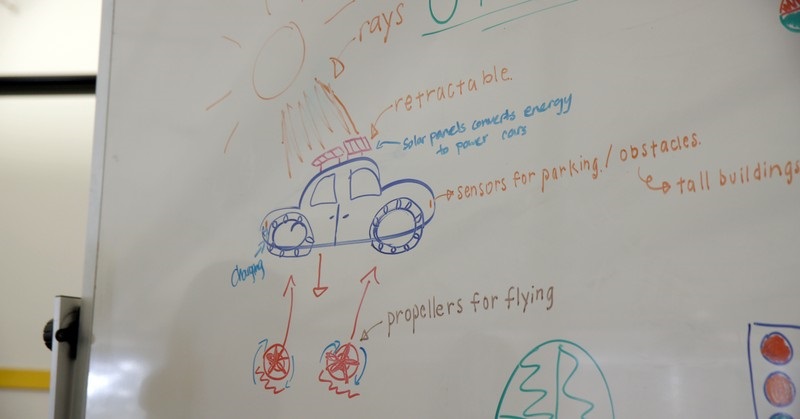
Workshop participants used white boards to brainstorm, map out their ideas, and then share them with the other groups.
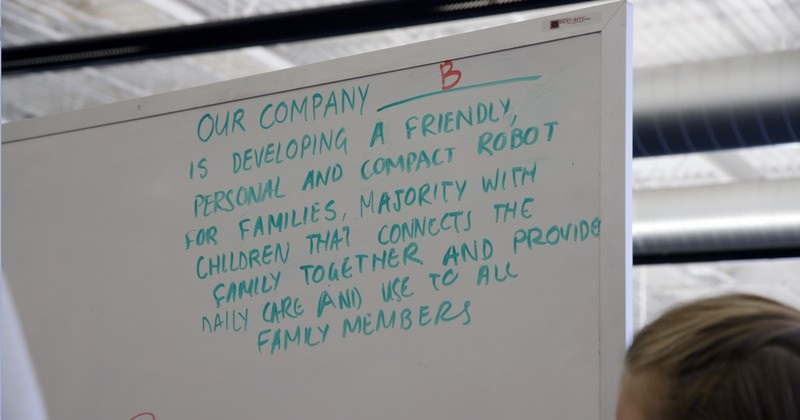
One group’s plan for a robot to help families in the year 2040.
The 2017 World Pitch Summit was held August 7–11, and CHM was excited to welcome this year’s visiting teams for a special workshop on Wednesday, August 9. All 23 girls had already designed, built, and pitched an app as part of the Technovation Challenge, so it was no surprise that they quickly rose to the design challenge presented in our Design the Future workshop.
Design the Future encourages participants to imagine what the future might look like, with a specific emphasis on the role of technology. Students think about the changes they hope to see in the future and envision themselves as drivers of that change by designing a technology or product to serve the needs of a target audience. This begins with a discussion of what the world might look like in the year 2040. The Technovation group shared thoughts about how the world might change, anticipating increases in automation, advances in medicine, and other changes in technology. Their ideas about the future then provided a launch point for the rest of the workshop as the girls worked in groups to design a product (robot or autonomous vehicle) for a targeted audience.
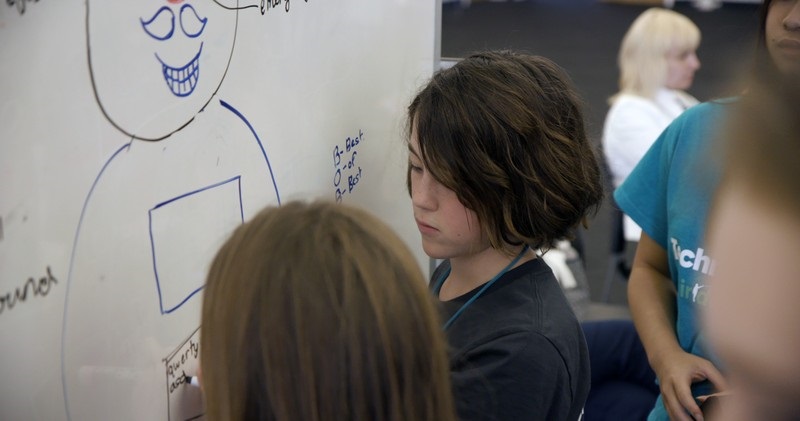
Students working on their design for a robot to be used in hospitals.
A tour of the Museum’s galleries is an important piece of the workshop, using historical examples to help inspire ideas for the future. The tour is a discussion-based exploration of stories and artifacts that highlight important factors to consider in the design process. The groups looked at both robots and a self-driving car and examined what technology currently exists in each area, how it has changed over time, and how it might develop further in the next 20 years. And throughout the tour, we explored questions of integration, usability, and audience. We observed how robots intended for different audiences different in design and appearance, and discussed how self-driving cars might interface with other technologies and with each other. Successful product design is about much more than the technology, and the workshop encourages students to incorporate a variety of factors in their designs.
After the tour, each group finalized their design and shared their ideas in a concluding presentation. We have offered the Design the Future workshop for several years, and I am always impressed with the innovative ideas shared in the presentations. The Technovation workshop was no exception. One group designed a robot to help families by flying around the house to wherever it is needed. Another team designed a self-driving car for cities that could fly to avoid traffic. They paired this with traffic drones—traffic lights for the sky. Another group shared their plan for a robot as an aid in hospitals, and the final group created a self-driving vehicle for small towns and rural areas. Each idea was unique and thoughtful, and the presentations showed a clear grasp of how to sell an idea.
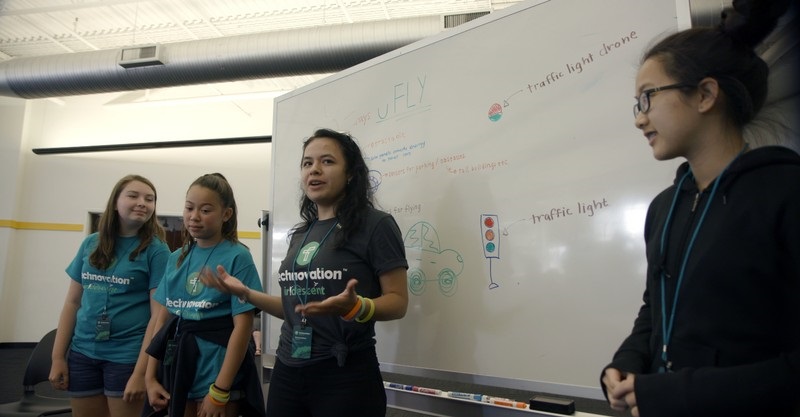
A group presents their plan for an autonomous vehicle for use in urban areas. They developed a flying car complete with floating traffic lights to regulate traffic on the ground and in the air.
The goal of Design the Future is to help students think not just about what technology might look like in 20 years, but also about what it will take to get there. Students don’t just come up with an idea for a new technology, they explore what it would take to develop and sell that idea to their intended audience. They discover that creating a new product is about more than coding or technological skills but also involves audience research, design, marketing, branding, and more. And hopefully they see parts of the process that excite and interest them to investigate further.
The lessons of the Design the Future challenge closely align with those of Technovation as they guide participating girls to create an app that addresses real-world problems. They learn that creating an app, or any technological product, is about more than just writing the code. And they learn the benefits of working in a team where different members have different strengths and interests. Working with Technovation and with these girls was a great opportunity to bring our two programs together and connect during the 2017 World Pitch Summit.